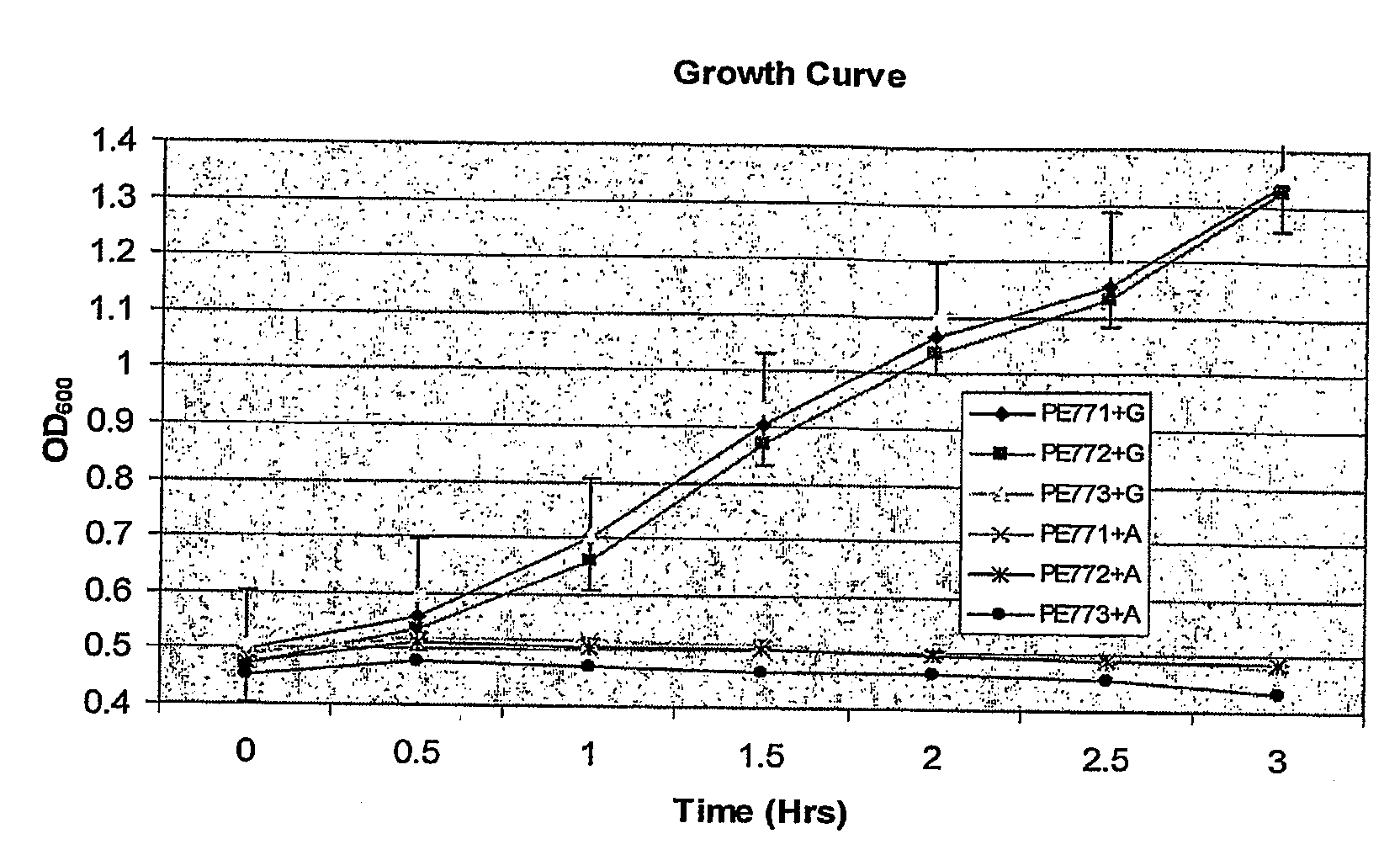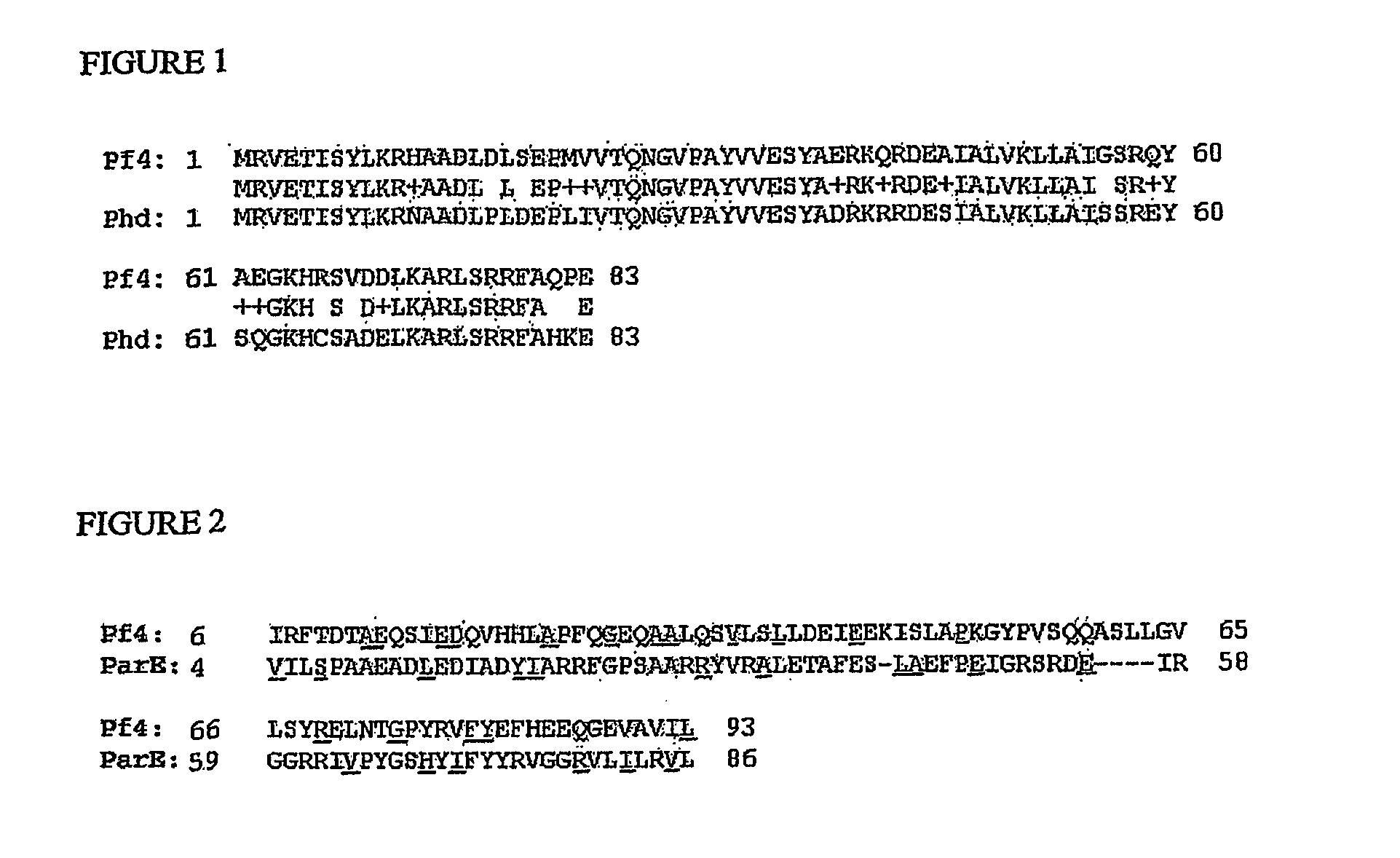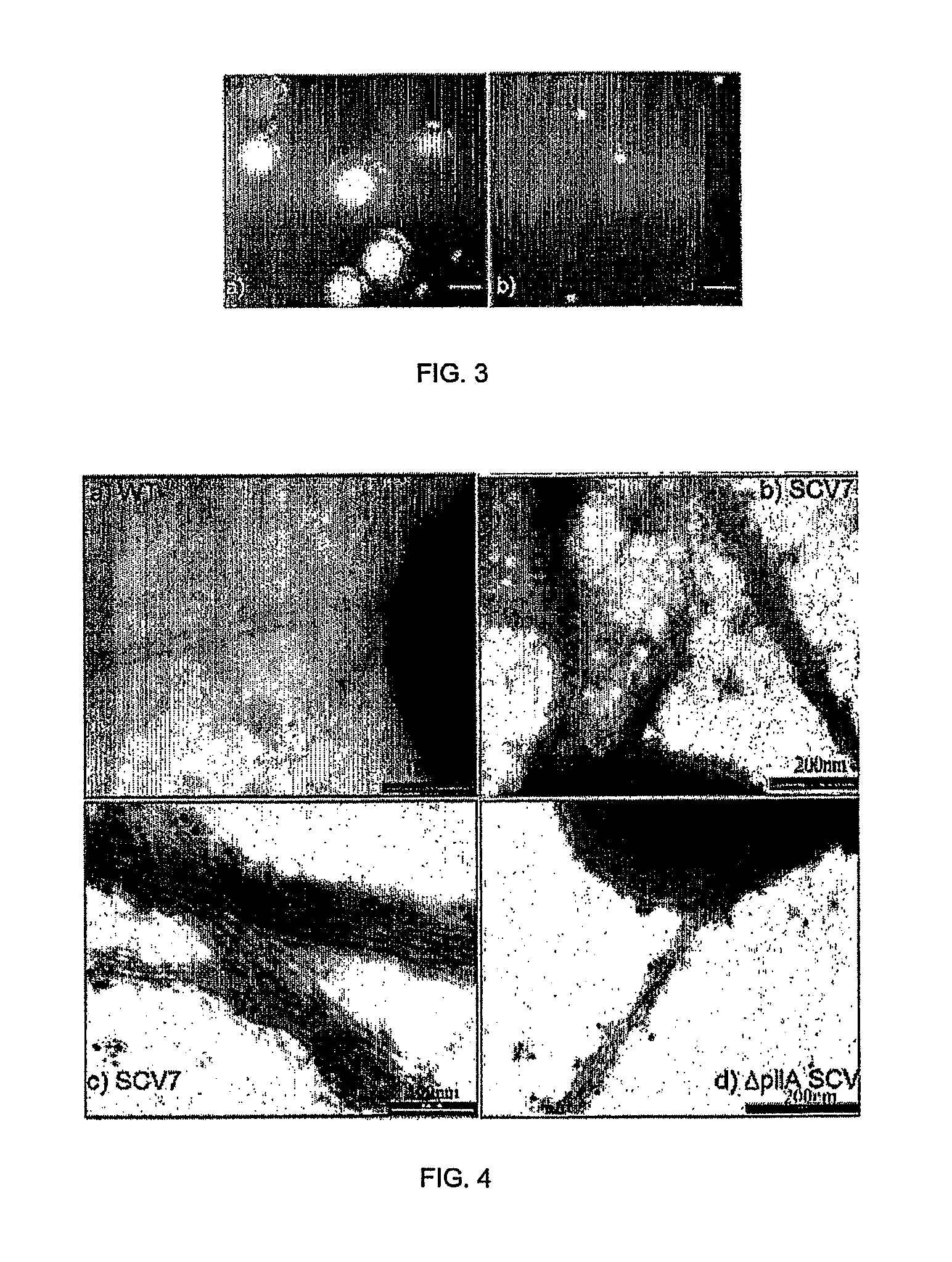Toxin-antitoxin system and applications thereof
a technology of antitoxin and anti-toxin, applied in the field of antitoxin system, can solve the problems of cell death, use of antibiotics in this manner, and decrease of plasmid yield, and achieve the effect of maintaining stability
- Summary
- Abstract
- Description
- Claims
- Application Information
AI Technical Summary
Benefits of technology
Problems solved by technology
Method used
Image
Examples
example 1
[0227]A current question in biofilm research is whether biofilm-specific genetic processes can lead to differentiation in physiology and function among biofilm cells. In Pseudomonas aeruginosa, phenotypic variants which exhibit a small colony phenotype on agar media, and which demonstrate a markedly accelerated pattern of biofilm development when compared to the parental strain, are often isolated from biofilms. We grew P. aeruginosa biofilms in glass flow-cell reactors and observed that the emergence of small colony variants (SCV's) in the effluent run-off from the biofilm correlated with the emergence of plaque-forming Pf1-like filamentous phage (here designated Pf4) from the biofilm. Because several recent studies have highlighted that bacteriophage genes are among the most highly upregulated groups of genes during biofilm development, we investigated whether Pf4 plays a role in SCV formation during P. aeruginosa biofilm development. We carried out immunoelectron microscopy using...
example 2
Cloning of the Pare-Like Toxin Gene
[0257]White colonies picked up from the pGEM T-Easy-parE transformation, where cultured in LB / Ampicilin at 37° C. overnight. Plasmid DNA was extracted, and the presence of insert DNA was determined by restriction digestion of pGEM T-Easy-parE with restriction enzymes HindIII and PstI and then running gel electrophoresis.
[0258]FIG. 10 is the gel picture of the plasmid DNA from the 2 typical positive clones picked from pGEM parE-like clones. Bands observed, from digestion experiments on the plasmid extracted from a typical positive clone confirm that the upper band from pGEM parE-like clone 2 was the digested pGEM vector (3 kb in size). The lower band of pGEM parE-like clone 2 are of size 300 to 400 bp which corresponds to the size of parE-like gene, 348 bp.
[0259]Verification of the orientation of insert by restriction mapping was performed. It can be seen from the gel that lane 2 has a fragment of around 3 Kb and a fragment of about 300 to 400 bp. L...
example 3
[0260]The sequence for the 2 genes (SEQ ID NO.1 and SEQ ID NO.2) and the sequence comparisons with related gene families are as shown in FIGS. 1 & 2. Comparisons with other related proteins are shown in FIGS. 11-14.
PUM
| Property | Measurement | Unit |
|---|---|---|
| Fraction | aaaaa | aaaaa |
| Fraction | aaaaa | aaaaa |
| Fraction | aaaaa | aaaaa |
Abstract
Description
Claims
Application Information
 Login to View More
Login to View More - R&D
- Intellectual Property
- Life Sciences
- Materials
- Tech Scout
- Unparalleled Data Quality
- Higher Quality Content
- 60% Fewer Hallucinations
Browse by: Latest US Patents, China's latest patents, Technical Efficacy Thesaurus, Application Domain, Technology Topic, Popular Technical Reports.
© 2025 PatSnap. All rights reserved.Legal|Privacy policy|Modern Slavery Act Transparency Statement|Sitemap|About US| Contact US: help@patsnap.com



